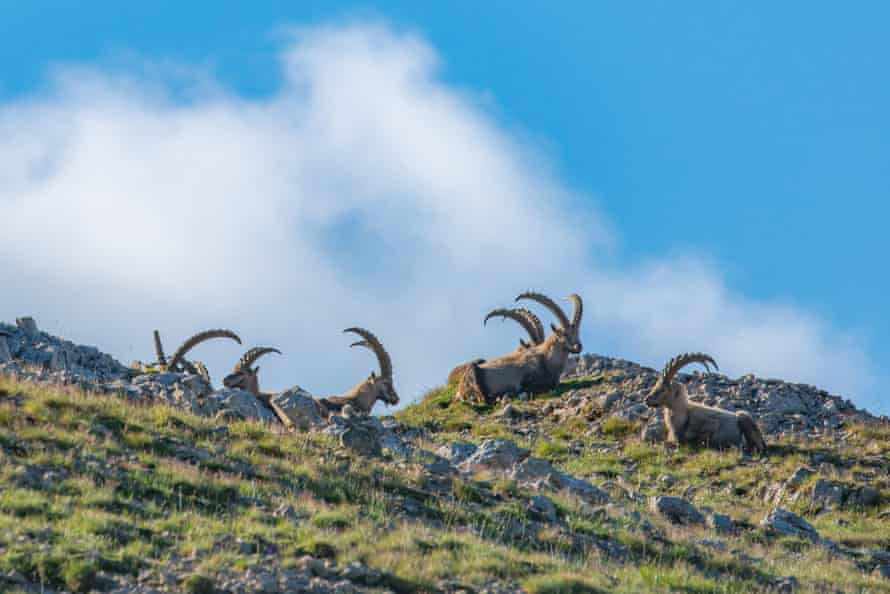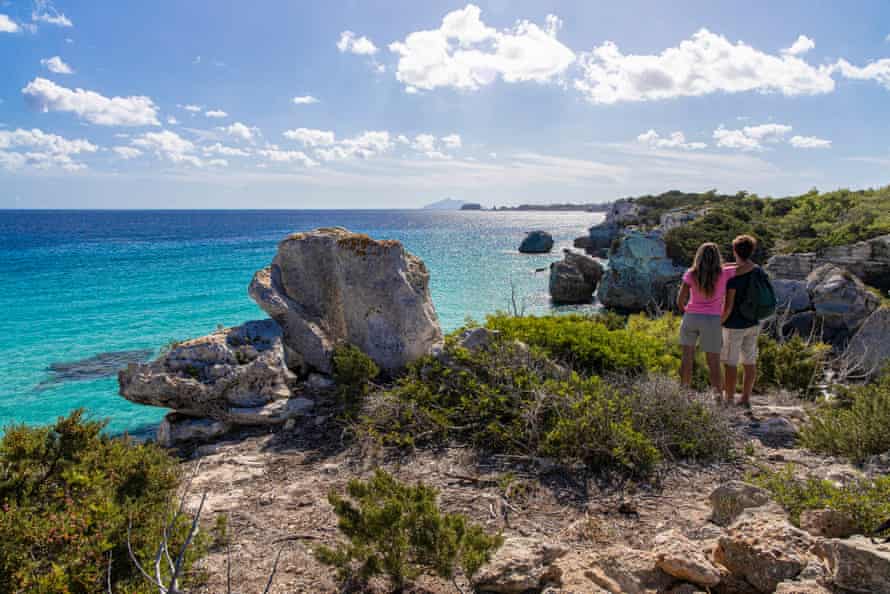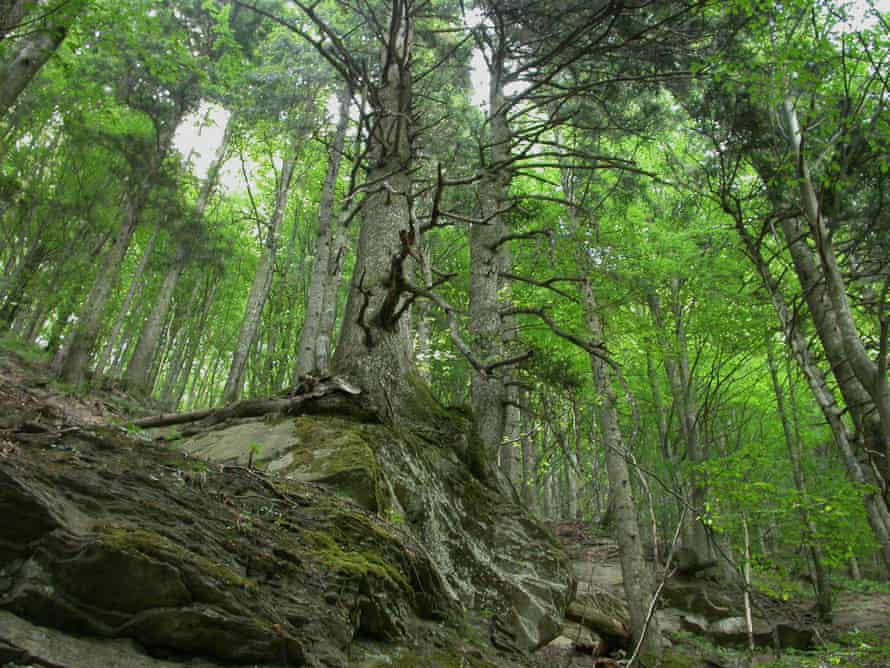When Kawesqar national park was formed in the Chilean part of Patagonia in 2019, just one ranger was responsible for an expanse the size of Belgium. Its fjords, forests and Andean peaks are a precious wilderness – one of the few remaining ecosystems undamaged by human activity, alongside parts of the Amazon, the Sahara and eastern Siberia.
Chilean officials hope that Kawesqar will, one day, meet the high standards for protected areas laid out by the International Union for Conservation of Nature (IUCN) and make it on to the organisation’s “green list”.
The IUCN’s green list of protected and conserved areas is less well known than its red list of threatened species. But this week, 10 more sites – in Switzerland, France and Italy – achieved green list status, bringing the total to 59 sites in 16 countries. Contamines-Montjoie national nature reserve near Mont Blanc was among seven added in France, increasing the country’s sites to 22, the highest number in the world. About 500 sites in 50 countries are working to meet the 17 requirements on good governance, planning, management and preservation of nature to achieve this status.

In Chile, the standard has supported a big conservation drive, including an upgrade of the national park system. The country has established a large network of protected areas in Patagonia, with more rangers in Kawesqar. On Earth Day, Chile announced it was putting forward two parks for green list approval.
“The green list is an opportunity for aspiration and hope. Conservation is often about red lists, threats and potential extinctions. This is the opposite,” says Victor Lagos San Martin, head of monitoring, development and governance of wild areas at Chile’s National Forest Corporation. “The list helps us work out how we can paint the planet green. It helped our plans for the national park system.”
One of the standard’s strengths is that it does not always reward the usual suspects in conservation, according to James Hardcastle, who leads the IUCN’s green list initiative. It is designed to recognise success stories, big and small. Alongside established national parks, indigenous reserves and provincial parks have achieved the status, while better-known protected areas are still working to get on the list.
Hardcastle says the standard is intended to improve the quality of conservation work around the world and, where necessary, encourage parks and governments to confront difficult truths about indigenous rights and unsustainable tourism models.

“We have about 250,000 protected areas and global studies show that most are not effectively managed,” he says. “Successful conservation only comes when you get the balance of looking after local interests and local values with reference to national and international elements.”
Q&AWhat is the plan to protect 30% of the planet for nature? Show
The UN Convention on Biological Diversity (CBD) has drafted a document that outlines nature commitments until 2030. One of the key features of the pledge – which is set to be agreed on next year – is to protect 30% of the planet by 2030 in a bid to halt global biodiversity loss. This would mean approximately doubling the current amount of protected land and quadrupling the size of marine protected areas.
The idea of protecting large swathes of the planet is not new. In the 1970s, calls to protect half the world started with the Nature Needs Half movement. One of the world’s most respected biologists, Edward O Wilson, was at the centre of this plan, and in 2016 published a book, Half-Earth. In 2017, 49 scientists wrote a paper looking at how feasible Half Earth would be. They recommended a Global Deal for Nature, like the Paris climate deal, that promoted the increase of habitat protection to 50% by 2050. It looks like the 30% by 2030 plan is the one that will be agreed on.
A global assessment carried out by 100 experts found the benefits of protecting 30% was five times greater than the cost of doing it and would provide significant benefits in the form of ecosystem services such as climate change mitigation, flood protection, soil conservation and the provision of clean water. These “public goods” would increase economic output by between $64bn and $454bn each year, researchers estimated. The report, commissioned by the Campaign for Nature charity, found protecting a third of the planet would also avoid mass extinction.
Exactly what counts as “protected” land is still debated, with many raising concerns about “paper parks” that in reality do little to support nature. In the UK, for example, 26% of land is theoretically protected, but in practice an estimated 5% is protected. The European Commission has acknowledged that poor management of protected sites is a problem across the EU which is having “disastrous consequences on biodiversity”. Improving the management of existing protected sites is therefore also needed in order to halt catastrophic biodiversity loss.
A commitment to protect about 30% of land and sea by 2030 is likely to be agreed at the UN Convention on Biological Diversity, which is scheduled for later this year in Kunming, China.
Dozens of countries, including the UK, Costa Rica and France, have already made the commitment.
Hardcastle hopes green list standards will stop countries imposing strict controls on areas in the name of nature conservation to meet these commitments.
“The green list is not a beauty contest or about showing who is the biggest. We have sites like the Amarakaeri reserve in Peru, which is an indigenous territory. Conservation there is as effective as, if not better than, a strict protection model. When you have smaller sites on the green list, you get a little bit of a competitive edge to achieve it,” he says.
The Amarakaeri communal reserve in the Amazon basin in eastern Peru is managed through a partnership with the government and Harakmbut, Yine and Machiguenga communities, protecting the forest from illegal gold miners, loggers and drug smuggling. The reserve maintains the area’s water quality and operates sustainable nut farming to support local communities.
“I am convinced that you cannot have protected areas for nature if the people that live in and around them don’t benefit. For me, our co-governance model is a big step,” says Asvin Florez Gil, who leads the government side of the Amarakaeri reserve partnership. “Protected areas do not need to be a threat to indigenous communities. Quite the contrary.”

Walter Quertehuari Dariquebe, who represents indigenous communities in the partnership, is clear about the benefits.
“We have learned that development and conservation can go hand in hand. Because conservation has had economic benefits for communities, it’s not seen as a threat,” he says.
“It’s shared governance structure. We make decisions and look for opportunities together. We are different from a national park that is slightly more reserved and structured. In the reserve, we can take advantage of resources in a sustainable way.”
Find more age of extinction coverage here, and follow biodiversity reporters Phoebe Weston and Patrick Greenfield on Twitter for all the latest news and features